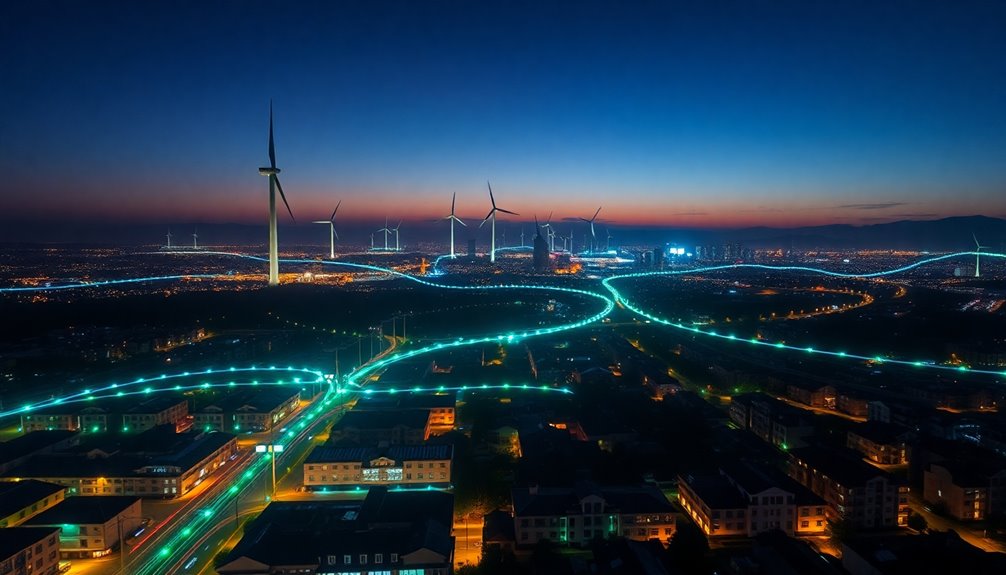Smart grids are revolutionizing energy distribution by seamlessly integrating digital technology with traditional electricity systems. They enable real-time communication between utilities and consumers, enhancing efficiency and reducing outages. With smarter metering and automation, you gain greater control over your energy usage, while utilities enjoy improved service delivery and operational efficiency. Plus, the incorporation of renewable energy sources creates a more resilient grid. Discover how these innovations set the stage for a smarter energy future.
Key Takeaways
- Smart grids leverage digital technology for real-time communication, enhancing the efficiency and reliability of energy distribution.
- Advanced metering infrastructure allows consumers to monitor energy usage, promoting informed decisions and reducing electricity costs.
- Integration of renewable energy sources optimizes supply and demand, creating a flexible energy mix that adapts to consumption patterns.
- Data analytics improves resource allocation by predicting peak usage times and enabling quicker responses to outages.
- The rise of electric vehicles and vehicle-to-grid technology enhances grid stability by utilizing stored energy from EVs.
Understanding Smart Grids: A New Era in Energy Distribution
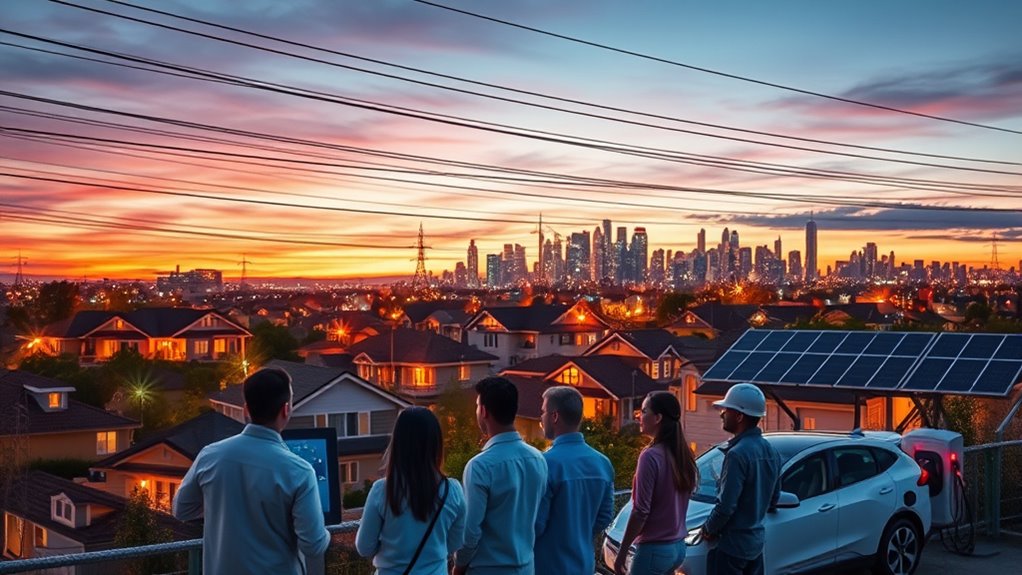
As the demand for energy continues to rise, understanding smart grids becomes essential for navigating this new era in energy distribution.
Smart grids integrate digital technology into traditional electricity systems, enabling real-time communication between utilities and consumers. You'll notice that these grids enhance efficiency, reliability, and sustainability in energy use.
By leveraging data analytics, smart grids optimize electricity flow, reduce outages, and empower you to monitor your consumption. This means you can make informed decisions about your energy usage.
Smart grids use data analytics to enhance electricity flow, minimize outages, and empower you to track your energy consumption.
As you adapt to this innovative approach, you'll likely find that smart grids support the transition to renewable energy sources, ultimately leading to a more resilient and eco-friendly energy landscape.
Embracing smart grids isn't just beneficial; it's imperative for our energy future.
Key Components of Smart Grid Technology
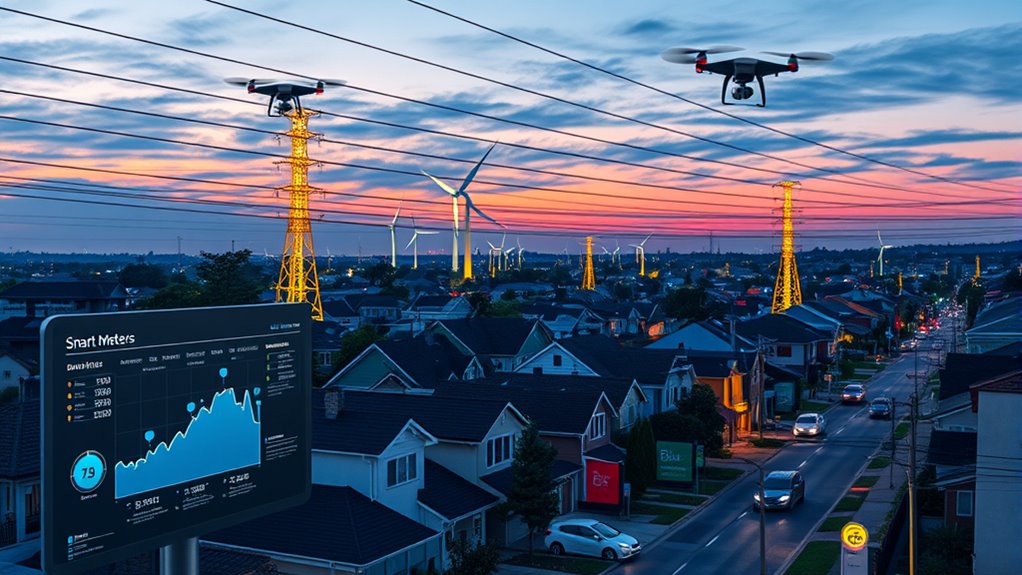
To fully grasp the potential of smart grid technology, it's crucial to understand its key components.
First, advanced metering infrastructure (AMI) allows for real-time data collection, giving you insights into energy usage patterns.
Then there are smart sensors, which continuously monitor grid conditions to enhance reliability and efficiency.
Communication networks play a vital role, enabling seamless data exchange between utilities and consumers.
Lastly, automated control systems ensure quick responses to disruptions, optimizing energy distribution.
Together, these components create a more resilient and efficient energy landscape.
By integrating renewable energy sources and improving demand response, smart grids not only enhance grid performance but also support a sustainable future in energy management.
Understanding these elements is your first step toward embracing smart grid technology.
Benefits of Smart Grids for Consumers and Utilities
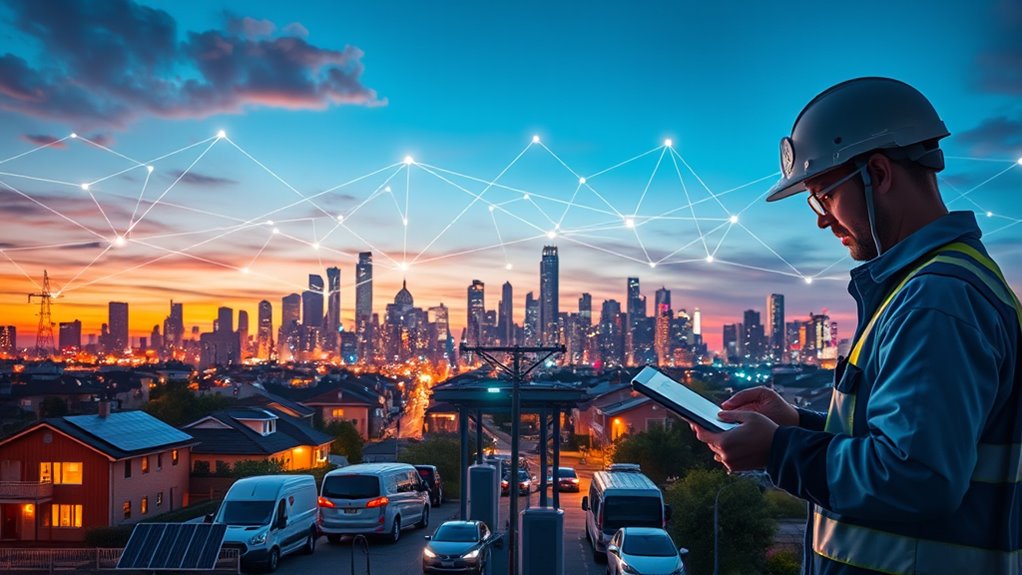
Smart grids offer numerous advantages for both consumers and utilities, making energy management more efficient and reliable.
For you as a consumer, smart meters provide real-time data on energy usage, helping you monitor and reduce your consumption. This means lower bills and the ability to make informed decisions about your energy habits.
For utilities, smart grids enhance operational efficiency by optimizing energy distribution and reducing outages. They can quickly identify issues and respond proactively, ensuring a more stable energy supply.
Additionally, both consumers and utilities benefit from improved communication and automation, leading to enhanced service delivery.
Ultimately, smart grids empower you with greater control over your energy choices while supporting utilities in delivering a more resilient energy infrastructure.
Integrating Renewable Energy Sources Into the Grid
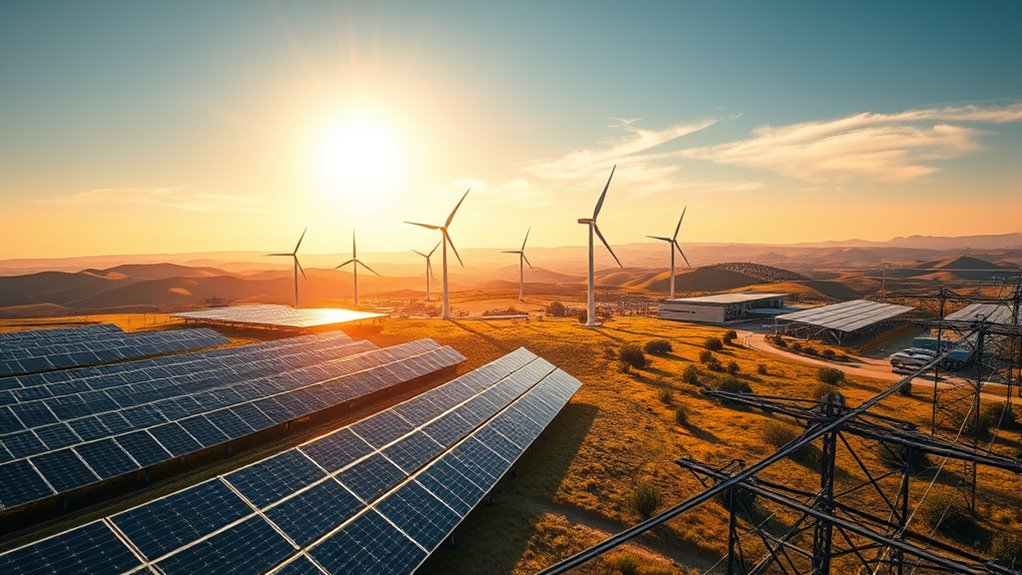
Integrating renewable energy sources into the grid not only enhances sustainability but also creates a more resilient energy system.
You'll see a shift toward cleaner energy as solar, wind, and hydroelectric power become more prevalent. This transition allows you to harness local resources, reducing dependence on fossil fuels and lowering greenhouse gas emissions.
With smart grids, managing the variable nature of renewables is easier, as they can optimize energy flow based on real-time demand and supply.
You'll benefit from a more flexible energy mix, which can adapt to changes in consumption patterns. Plus, the integration of these sources can lead to lower energy costs over time, making your overall energy experience more efficient and environmentally friendly.
Enhancing Reliability and Resilience With Smart Grids

As renewable energy sources become a larger part of your energy mix, enhancing the reliability and resilience of the grid becomes increasingly important.
Smart grids help you achieve this by integrating advanced technologies that monitor and manage energy distribution in real time. With automated systems, you're able to detect outages and respond quickly, minimizing downtime.
These grids also facilitate energy storage solutions, allowing you to store excess power for later use. By optimizing energy flow, smart grids can balance supply and demand more effectively, reducing the risk of blackouts.
Moreover, they empower you to adapt to changing energy needs and incorporate more renewable sources, ultimately creating a more robust energy infrastructure that supports sustainability and reliability.
The Role of Data Analytics in Optimizing Energy Flow
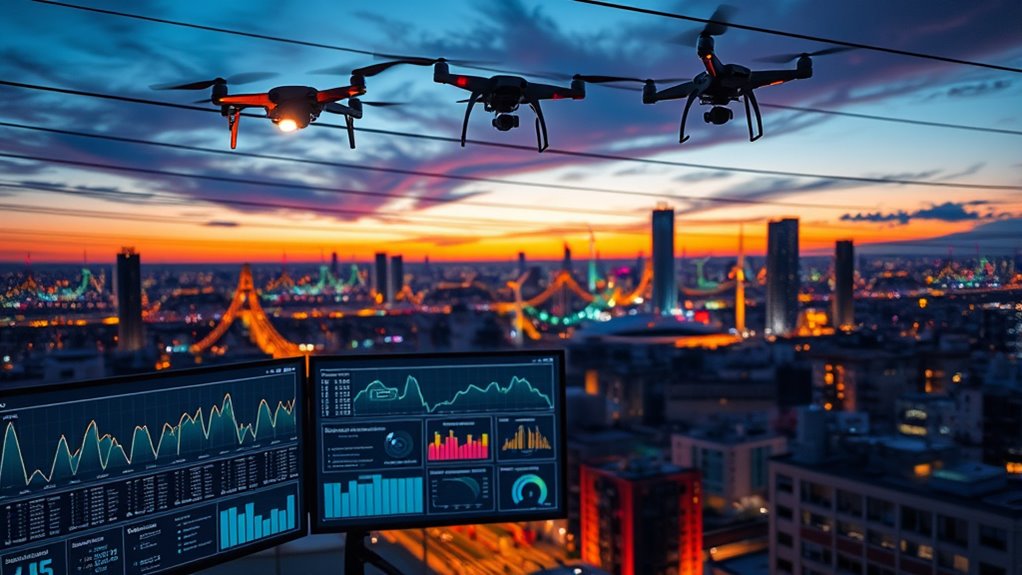
Data analytics plays a crucial role in optimizing energy flow, ensuring that electricity is distributed efficiently and effectively.
By analyzing vast amounts of real-time data from your smart grid, you can identify patterns in energy usage and demand. This insight allows you to make informed decisions about resource allocation and energy generation.
With predictive analytics, you can anticipate peak usage times and adjust supply accordingly, minimizing waste and reducing costs.
Predictive analytics enables proactive energy management, optimizing supply during peak times to cut waste and lower costs.
Moreover, data analytics helps in fault detection, enabling quicker responses to outages or disruptions.
By leveraging these insights, you not only enhance operational efficiency but also contribute to a more sustainable energy future.
Ultimately, this technology empowers you to manage energy distribution smarter and more responsively.
Smart Grids and Electric Vehicles: A Perfect Match
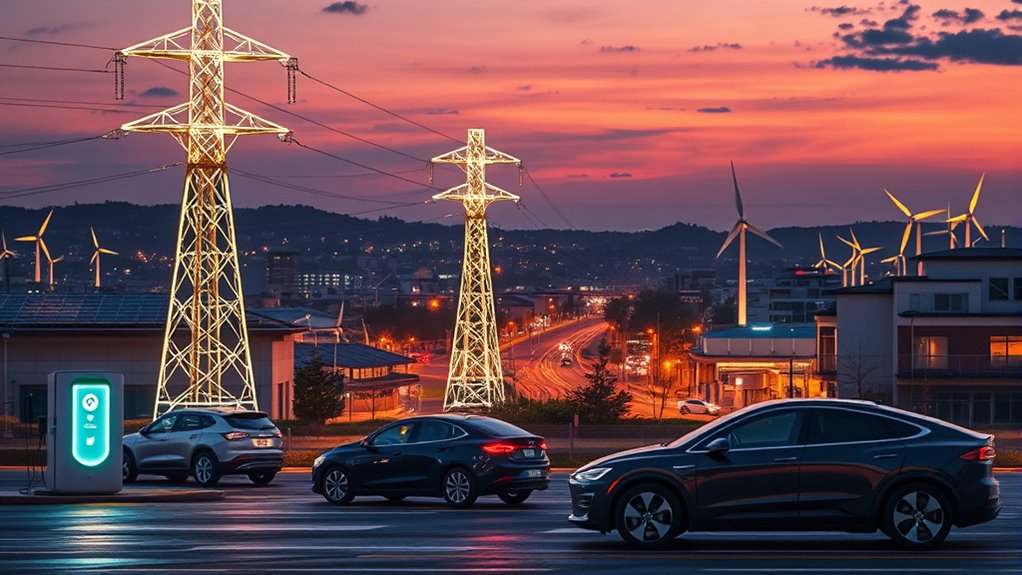
While the rise of electric vehicles (EVs) transforms the automotive landscape, smart grids are stepping up to create a seamless charging infrastructure.
By integrating renewable energy sources and advanced technology, these grids can manage the increased demand from EV chargers, ensuring you always have access to power when you need it.
Smart grids also facilitate vehicle-to-grid (V2G) technology, allowing your EV to not only draw energy but also return it to the grid during peak demand. This bidirectional flow helps stabilize energy supply and can even lower your electricity costs.
With real-time data and communication, smart grids make charging more efficient, promoting a cleaner, more sustainable future for transportation and energy consumption.
Embrace this perfect match for a greener lifestyle!
Challenges and Solutions in Implementing Smart Grids
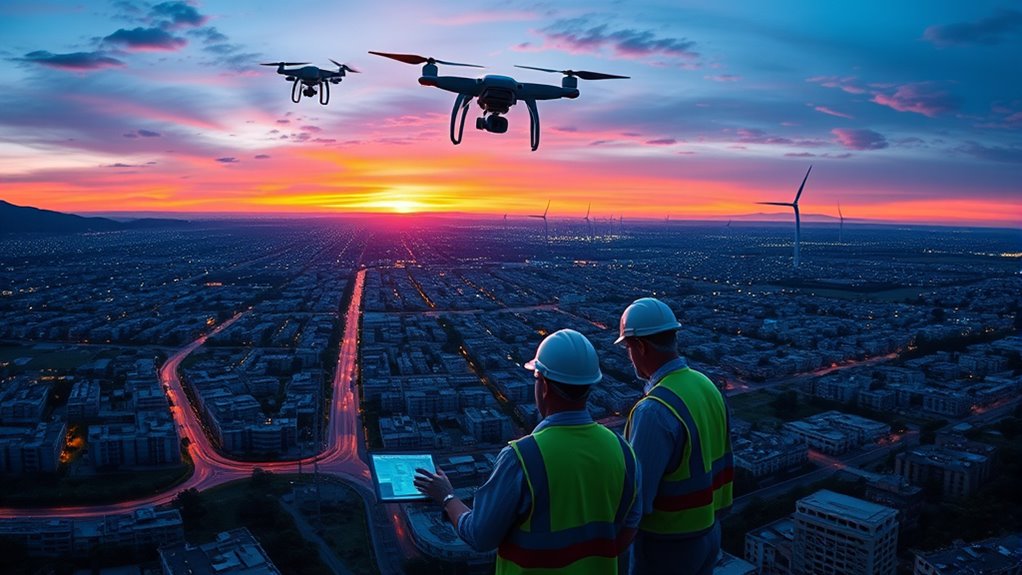
The integration of electric vehicles into smart grids offers exciting opportunities, but it also brings significant challenges to address.
You'll face issues like data security, grid reliability, and the need for advanced infrastructure. Cybersecurity threats could compromise sensitive customer data, so investing in robust security measures is crucial.
Additionally, you might encounter resistance from stakeholders who fear the costs of upgrading existing systems. To overcome these hurdles, prioritize collaboration among utilities, government, and technology providers.
Implement pilot programs to test solutions on a smaller scale before full deployment. Education and outreach can help build public support and understanding of the benefits.
The Future of Energy Distribution: Trends and Innovations
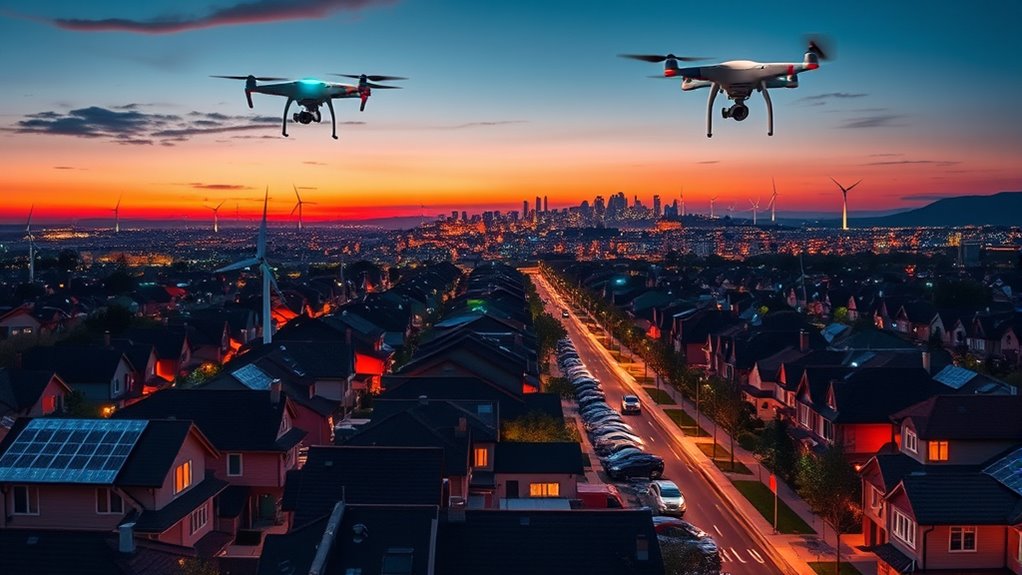
As technology advances, energy distribution is set to undergo significant transformations that promise greater efficiency and sustainability.
You'll see a rise in decentralized energy systems, allowing you to generate and consume energy locally. Innovations like blockchain will enhance transparency and security in transactions.
Smart meters will provide real-time data, enabling you to monitor energy use and adjust consumption accordingly. As electric vehicles become more prevalent, vehicle-to-grid technology will allow your car to feed energy back into the grid, optimizing resources.
Renewable energy sources will play a crucial role, with advancements in storage solutions ensuring a steady supply.
Embracing these trends won't only benefit you but also contribute to a more resilient and eco-friendly energy landscape.
Frequently Asked Questions
How Are Smart Grids Different From Traditional Energy Grids?
Smart grids differ from traditional energy grids primarily in their use of advanced technology.
You'll notice that smart grids incorporate digital communication, enabling real-time data exchange between consumers and energy providers. This means you can monitor your energy usage more effectively.
Additionally, smart grids allow for greater integration of renewable energy sources, improving efficiency and reliability.
What Role Do Consumers Play in Smart Grid Systems?
You'd think consumers just sit back and let energy flow, right?
But in smart grid systems, you're actually the conductor of your energy symphony. You monitor your usage, adjust consumption patterns, and even sell excess power back.
Your choices influence demand, helping balance the grid. With real-time data, you're empowered to make smarter decisions, turning you into a vital player in the energy landscape, not just a passive observer.
Are Smart Grids Susceptible to Cyber Attacks?
Yes, smart grids are susceptible to cyber attacks, just like any interconnected system.
Hackers could exploit vulnerabilities, potentially disrupting your power supply or compromising personal data.
However, utilities are aware of these risks and are implementing robust security measures to protect against attacks.
You can also play a role by using strong passwords and staying informed about security updates to help safeguard your own energy usage and personal information.
How Do Smart Grids Affect Energy Prices for Consumers?
Smart grids influence energy prices for you by optimizing energy distribution, enhancing efficiency, and integrating renewable sources.
They help reduce peak demand, lowering costs during high usage times. You benefit from real-time data, allowing you to make informed choices about your energy consumption.
With better management of resources, you'll likely see more stable prices and potential savings on your bills, encouraging a shift toward greener energy practices that can further drive down costs.
What Are the Environmental Impacts of Smart Grids?
Smart grids significantly reduce environmental impacts by optimizing energy use and integrating renewable sources.
You'll notice lower greenhouse gas emissions as they enhance energy efficiency and promote cleaner technologies.
By managing electricity demand in real-time, you help decrease reliance on fossil fuels, leading to a smaller carbon footprint.
Plus, smart grids support decentralized energy production, empowering you to utilize local renewable resources, which ultimately contributes to a more sustainable energy future.
Conclusion
As you embrace the revolution of smart grids, you're stepping into a future where energy distribution is not just efficient but also intelligent. Imagine a world where your energy needs are seamlessly met, powered by renewable sources and advanced technology. The potential for innovation is limitless, and by adapting to these changes, you're not just benefiting yourself but also contributing to a more sustainable planet. Will you seize this opportunity to be part of the energy evolution?
